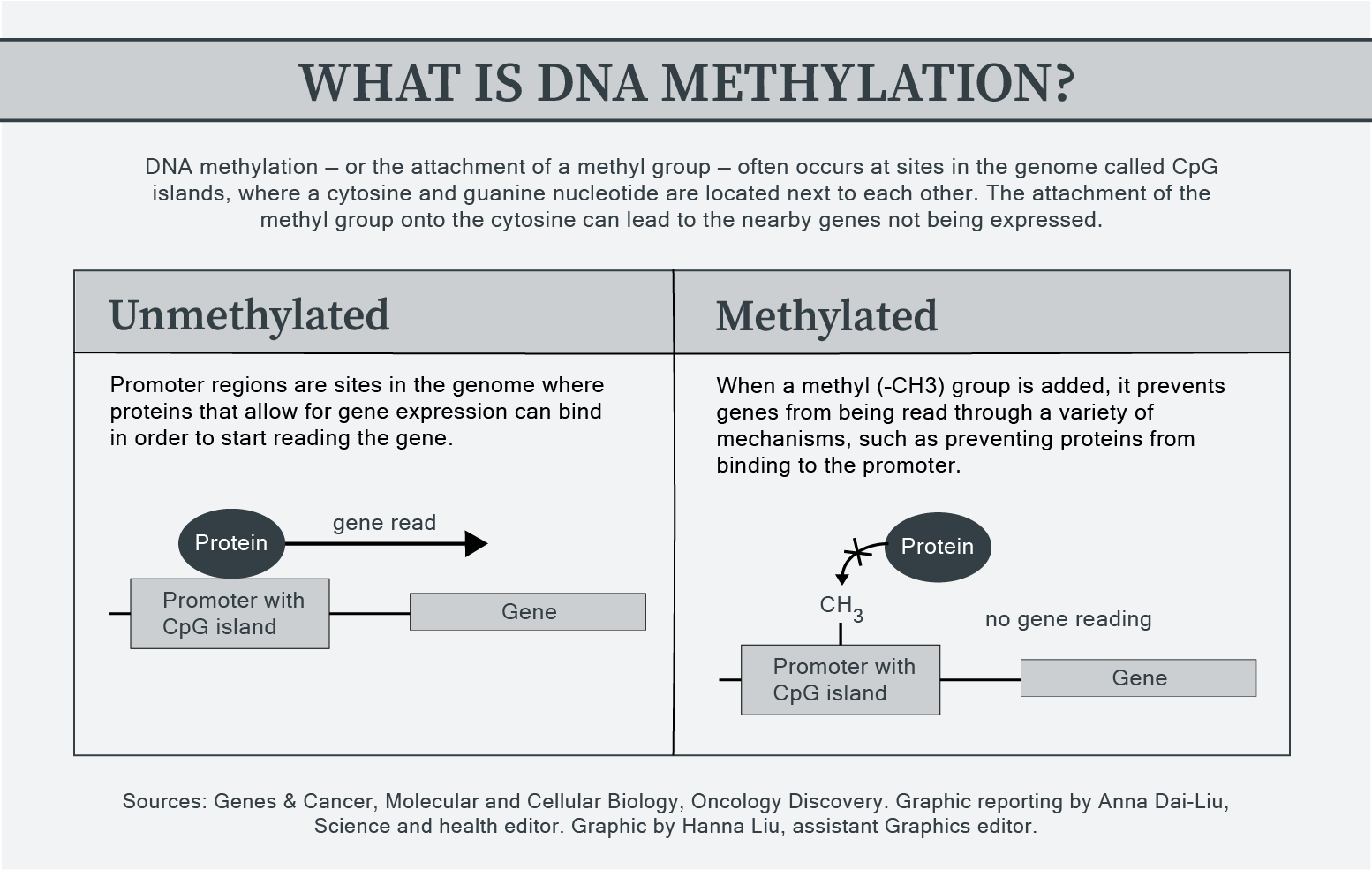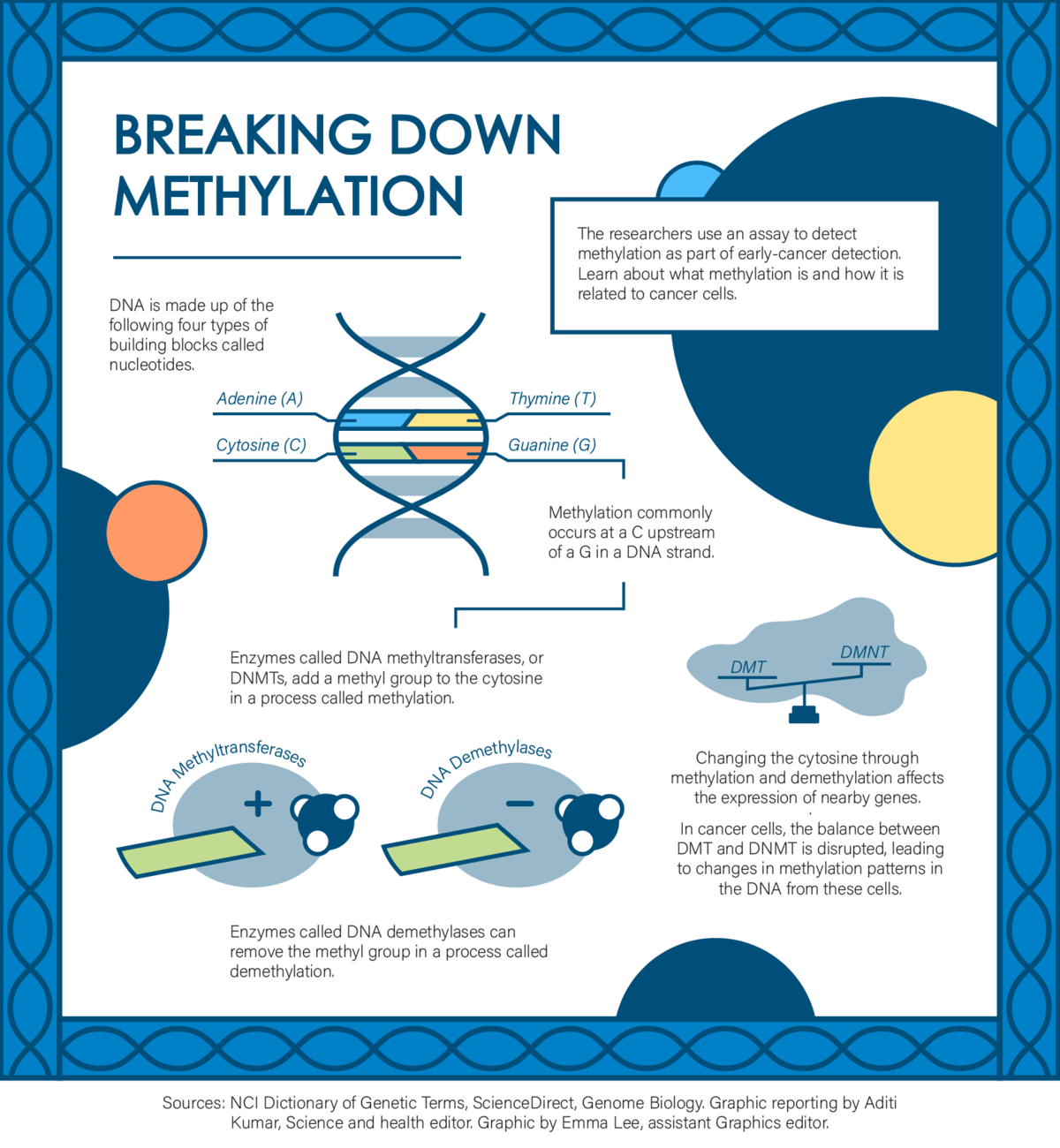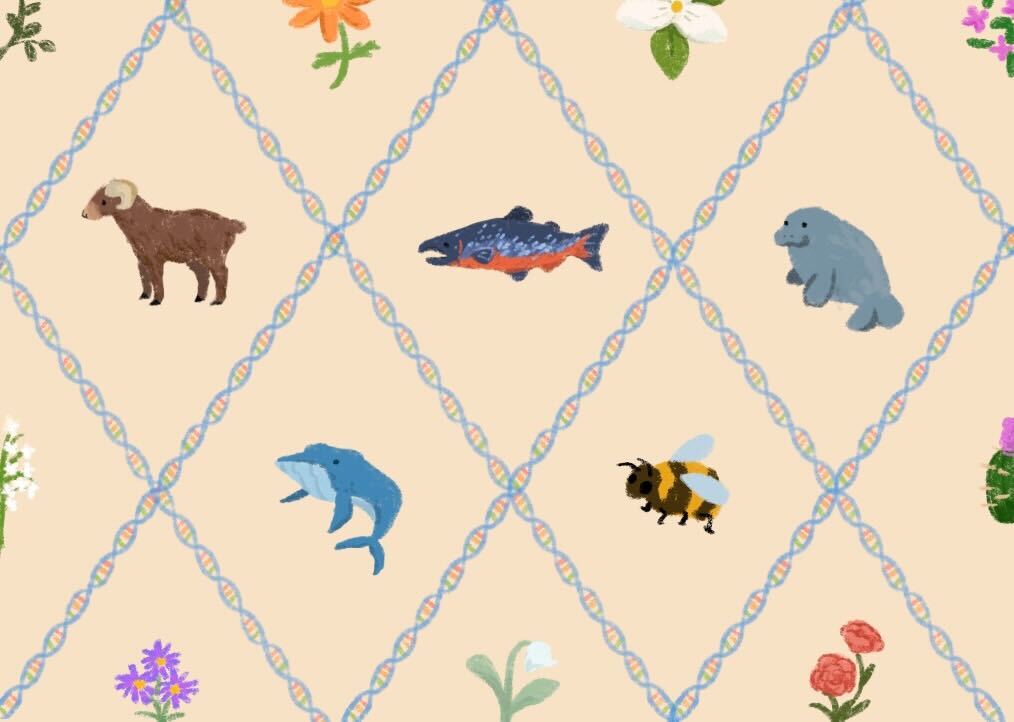UCLA researchers analyze mammal DNA for modifications associated with aging, lifespan

By Danielle H. Cho
Oct. 5, 2023 3:25 p.m.
UCLA researchers analyzed a certain type of DNA marker across hundreds of mammal species and found associations with traits such as lifespan, weight and age.
The study, published in August, examined patterns of DNA methylation – a genomic modification that suppresses gene expression without changing the actual DNA sequence – in 348 mammalian species, said Jason Ernst, one of the study’s authors.
The researchers wanted to investigate how similarly sized species could have such different lifespans, said Caesar Li, one of the paper’s first authors and a former biostatistics doctoral student.
Using computational methods, the researchers found several clusters of commonly modified locations in the genome that are associated with maximum lifespan, weight and age, which might be candidates for future screening and research, according to the paper.
These changes are believed to be closely intertwined with aging because the genome does not change over time, indicating that there must be something external to the genome, such as epigenetic modifications, related to aging, Li said.
Li added that the researchers chose to focus on DNA methylation because previous research by corresponding author and former UCLA professor Steve Horvath developed a method called the Horvath epigenetic clock that used DNA methylation to predict age in humans.
“We want to use the method and DNA methylation data to peek into the secrets of human aging,” said Li, who is now a biostatistician at Johnson & Johnson.
The study is the first to investigate DNA methylation across mammalian species, not just humans, Li said. This cross-species analysis allowed the researchers to examine what specific factors might be associated with maximum lifespan, since they could compare across species with different maximum lifespans, he added.
Li said a project of this scale is also unprecedented. The samples came from zoos and museums across the globe, said Amin Haghani, the paper’s other first author and a former postdoctoral scholar of human genetics at UCLA.
“The data that was collected based on this large international collaboration starts giving us some insights, biologically, into what’s associated with these differences between different mammalian species,” said Ernst, who is also a professor of biological chemistry, computational medicine and computer science.
Li said a challenge the researchers faced in analyzing the data was that they needed to identify and target similar sequences of the DNA across the samples. This is more feasible in humans, who all have similar DNA, but across different species, there is much more variation in the genomes, he added.
To work around this problem, Li said the scientists developed a method that targets conserved regions in the genome, or regions that stay relatively constant across different species. Using various computational methods, they could identify methylation sites that formed more connections, ultimately ending up with 55 such groups, Haghani said.
The researchers then used these clusters to form a tree based on the DNA methylation relationships, Li said, adding that they found this DNA methylation data constructed something that looked very similar to phylogenetic trees, which map out evolutionary pathways based on common ancestors between different species.
This similarity in trees suggests that epigenetic changes are linked to evolution, Li said. Ernst added this shows that there are similar evolutionary patterns on DNA methylation as the actual DNA sequences themselves.
Haghani said that related research has developed epigenetic clocks for mammals other than humans that may prove useful for conservation biology.
“They (many species) are in danger of extinction, or there is not much information about the chronological age,” he said. “These clocks will give a real gift to people who … want to study these species and track them over time to precisely estimate their age.”
Another important finding was that different methylation sites are associated with maximum lifespan and aging, Ernst said. This means that even if researchers are able to find a way to extend maximum lifespan, that would not necessarily prevent aging, he added.
One direction of study might be determining if methylation at these sites actually causes some of the observed effects such as maximum lifespan or aging, or if it is just an association, Li said. Finding just one or two genes that, if upregulated or downregulated, could result in a longer lifespan, would be the biggest finding of the century, he added.
“The ultimate goal is to find the cause of aging,” he said. “If we can do any modifications on that cause, then we could be using (it for) real aging treatment for humans in the future.”






